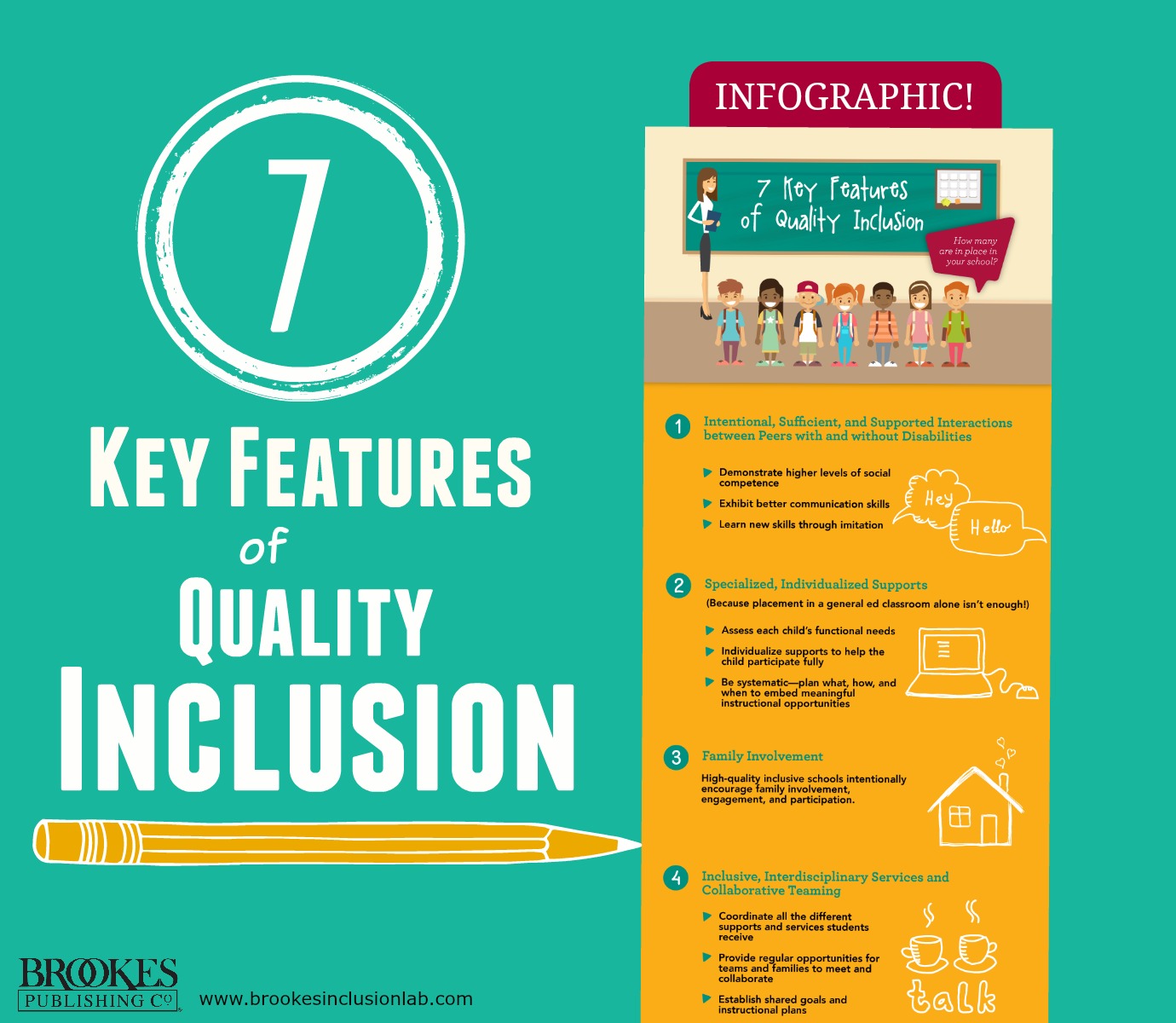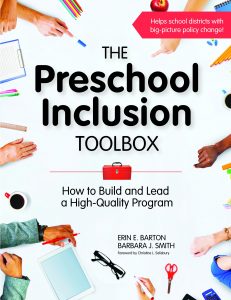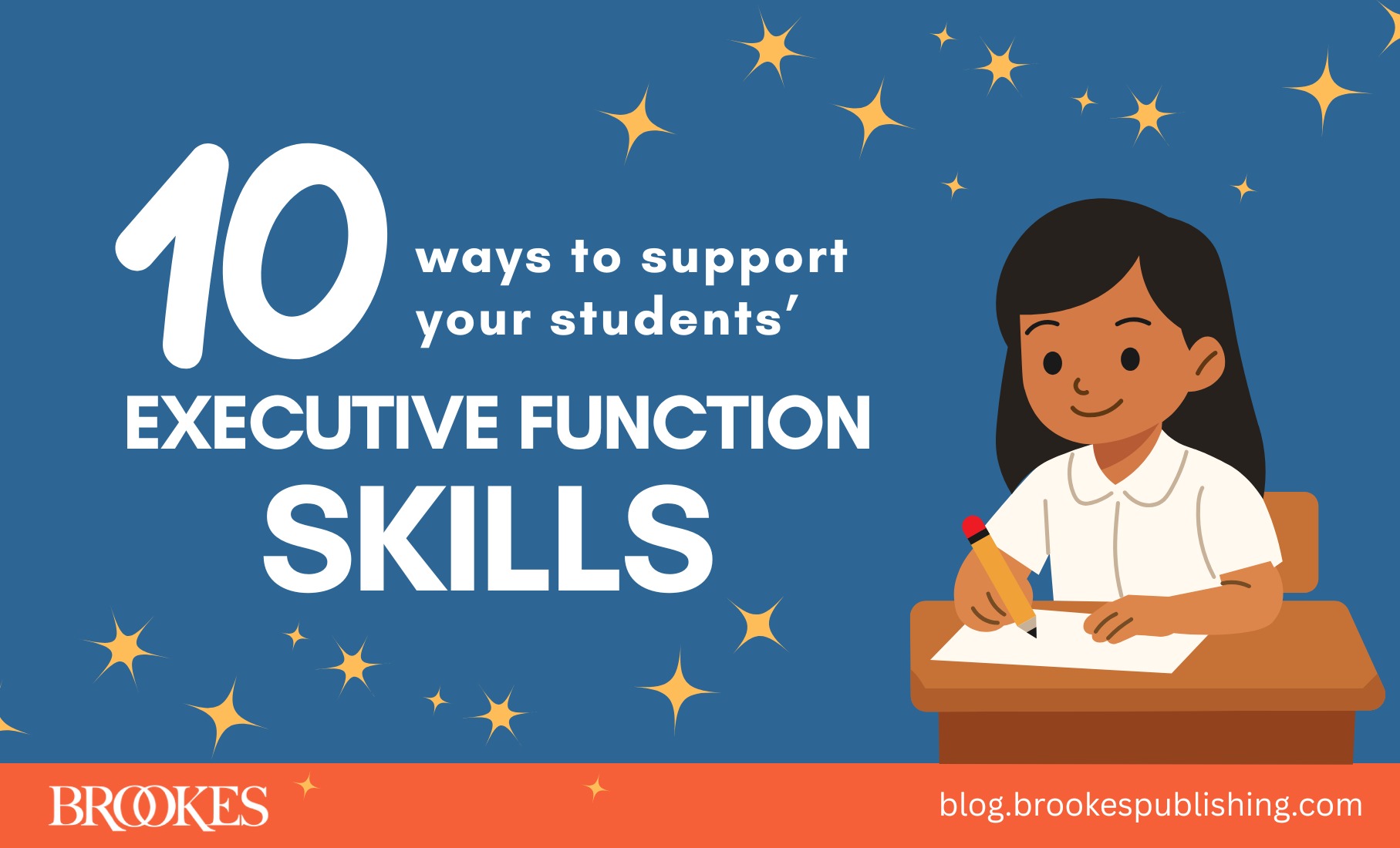7 Key Features of Quality Inclusion
September 1, 2016
Congratulations to our final August giveaway winner, Michael Roush! Michael, you’ve won an inclusion tote bag and a free copy of the book Universal Design for Learning in Action. We’ll be in touch for your address so we can get your prizes in the mail for you.
Today on the Brookes blog, we’re sharing a great inclusion infographic, perfect for pinning to your teacher board on Pinterest or printing out for your classroom or binder. The graphic walks you through these 7 key features of quality inclusion:
- Intentional, sufficient, and supported interactions between peers with and without disabilities
- Specialized, individualized supports
- Family involvement
- Inclusive, interdisciplinary services and collaborative teaming
- A focus on critical sociological outcomes
- Effective, ongoing administrative supports
- Ongoing program evaluation
Adapted from The Preschool Inclusion Toolbox, these 7 features were pinpointed with early childhood programs in mind, but they also have wider application in K-12 classrooms. Read and share with our fellow inclusion advocates, and then dive deeper into each feature with an excerpt from the book.
KEEP READING
 Explore each key feature of quality inclusion in this free chapter from The Preschool Inclusion Toolbox, filled with practical resources and great information. You’ll find an inclusion checklist, a “what we know and what we should be doing” handout, reflection questions, and more!
Explore each key feature of quality inclusion in this free chapter from The Preschool Inclusion Toolbox, filled with practical resources and great information. You’ll find an inclusion checklist, a “what we know and what we should be doing” handout, reflection questions, and more!





Write a Comment
Your email address will not be published. Required fields are marked *
comments
Michael Roush says
My 8th key feature of inclusion would be "a systemic belief that every student can and will exhibit high levels achievement when provided the appropriate amount and type of support." Without this, at the first sign that the student is falling behind typical peers, it is too easy to decide the system is fine, but the student is "broken", and address the issue by removing the student from the environment rather than adjusting the environment to better support the student.
Post a Comment